Pick the Best Index Fund for You
Smart-beta funds, which are emerging as alternatives to traditional stock-index funds, are worth a look.

Investors looking for an easy and low-cost way to earn market returns have flocked to index funds in recent years, pushing up assets in these passively managed products to a record $3.8 trillion. But the popularity of these funds, which historically have been known for their simplicity, has led fund sponsors to release an avalanche of new index funds that are anything but simple. Now, with 1,901 mutual funds and exchange-traded funds available that seek to match (and occasionally beat) a benchmark, choosing the right fund for you can be downright bedeviling.
Morningstar researchers recently released a 63-page guide on just the latest entrants in the index fund arena—strategic, or “smart beta,” index products. Although these kinds of funds have grown in popularity because many outperformed traditional index funds over various time periods, the 673 smart-beta choices currently available are neither simple nor intuitive, says Ben Johnson, Morningstar’s director of passive-fund research.
To be sure, they all follow some aspects of the traditional index formula, such as having computers buy and sell stocks based on set criteria rather than having fund managers make the selections. In many other key ways, however, these new funds vary markedly from traditional index funds. All strategic index funds attempt either to solve a real or perceived problem with traditional index funds or to give investors index-like exposure to a subset of the market, such as dividend-paying stocks or stocks that are less likely to swing sharply in value, says Johnson.

Sign up for Kiplinger’s Free E-Newsletters
Profit and prosper with the best of expert advice on investing, taxes, retirement, personal finance and more - straight to your e-mail.
Profit and prosper with the best of expert advice - straight to your e-mail.
But how these funds go about achieving their goals can have a dramatic impact on long-term results and on the risks they present to investors. “Most people think they get extra return for no more risk,” say Allan Roth, a certified financial planner and founder of Wealth Logic, a Colorado Springs financial planning firm. “That’s never true. You have to be prepared for more volatility and higher costs.”
What exactly are smart funds? Are they right for you? And how can you best choose among the vast array of disparate index options in today’s increasingly complex landscape?
The basics
These designer index funds all start with an index, just like traditional index funds. However, traditional index funds buy every stock in the relevant index in direct proportion to their weight in the index. Thus if Apple (AAPL) makes up 3% of Standard & Poor’s 500-stock index, an S&P 500 fund will hold 3% of its assets in Apple stock.
Because most indexes are weighted by market capitalization, the biggest holdings in traditional index funds are companies that are worth the most on Wall Street. Consider Vanguard Total Stock Market Index (VTSMX) and its exchange-traded clone, Vanguard Total Stock Market ETF (VTI). Both of these products seek to own the entire U.S. stock market by tracking the CRSP US Total Market index (the acronym stands for the Center for Research in Security Prices). Both funds own almost all of 3,771 stocks in the index. But because the biggest companies are worth so much more than the smaller firms in the index, the fund’s top 10 holdings account for nearly 15% of its assets. Not surprisingly, the performance of the stocks of those top companies carry far more weight than the stocks of the small companies in the index.
In contrast to traditional index funds are so-called smart-beta index funds. These funds may start with a broad market index, but instead of weighting stocks by market value, they weight them by fundamental, business-related criteria. For example, PowerShares FTSE RAFI US 1000 ETF (PRF) weights its holdings by a company’s revenues, cash flow (earnings plus depreciation and other non-cash charges), book value (assets minus liabilities) and dividends. So, although Apple and Microsoft (MSFT) are first and third, respectively, in a traditional Russell 1000 index and account for 5% of its assets today, they make up only 2.5% of the RAFI index fund.
What’s the draw?
There are several. First, strategic index funds straddle the gap between straight index offerings and actively managed funds by promising to focus on an attractive segment of the market or to weed out potentially bad actors, such as money-losing companies; stocks that appear overpriced; or companies that don’t pay dividends.
Second, strategic ETFs can sort through all the companies in an index (or create an index) to pick up on a hot trend, such as investing in technology or health care or a particular foreign market. (Although that’s similar to sector index funds, smart-beta sector indexes might eliminate unprofitable companies or those that don’t pay dividends, for example.) And because fundamental index funds pick securities based on a formula, rather than having a team of high-priced experts making buy and sell decisions, they can offer these market bets for lower fees than an actively managed specialized fund could.
Experts generally discourage investors from making big bets on a narrow market segment. But when the segment is broad and serves a particular purpose, the right designer index fund can be attractive. For instance, if you want an index fund that pays high dividends, you may find comfort in a smart-beta ETF such as WisdomTree LargeCap Dividend (DLN) and Vanguard Dividend Appreciation (VIG). The WisdomTree fund invests in roughly 300 dividend-paying stocks, with the biggest payers getting the most weight in the index. The Vanguard ETF uses dividend growth to identify quality companies, investing only in those that have hiked their payouts for at least 10 years in a row. I like both of these ETFs. Their annual expense ratios are 0.28% and 0.10%, respectively.
[page break]
The biggest selling point for fundamental index funds has been research that contends they will perform better than traditional index funds over time. Because the history of designer indexes is short—few have been around for more than a decade—the funds support their arguments by submitting results of back-testing. In other words, they produce studies that show how a particular strategy would have performed in the past, and they almost always conclude that the fundamental index would have outperformed a similarly constituted traditional index, sometimes by as much as two percentage points per year.
The problem, says Morningstar’s Johnson, is that the studies are all financed by the producers of the designer indexes and the funds that seek to emulate them. Given those conditions, you’ll never hear of a company creating a fund that follows a strategy that has lagged its traditional benchmark.
Real-world performance of designer index funds has been mixed. PowerShares RAFI fund, for instance, lagged its benchmark, the Russell 1000 index, by an average of 0.7 percentage point per year over the past five years through October 14. By contrast, PowerShares Buyback Achievers (PKW), which invests in companies that are repurchasing their shares, beat its bogey, the S&P 500 index, by an average of 3.5 percentage points per year. Regardless of the past five years’ results, I like both of these funds. The RAFI fund charges 0.41% annually, while Buyback Achievers costs 0.68%.
What are the drawbacks?
First, designer index funds cost more. One of the big draws of traditional index funds is that they provide market returns on the cheap, typically charging annual fees of less than 0.2%. Some index ETFs charge as little as 0.04% per year. Traditional index funds are tax-efficient, too, because they rarely sell stocks, something that can trigger capital gains that may have to be distributed to shareholders. (These distributions aren’t relevant for funds held in a tax-favored account, such as an IRA.) Because designer index funds are regularly re-sorting stocks based on criteria such as profits and sales, says Johnson, they are far more likely to realize capital gains. The additional activity also boosts trading costs. Moreover, fundamental funds typically charge higher fees than straight index funds.
Finally, the greatest thing about index funds is that they’re simple. If you buy an S&P 500 index fund from an experienced index-fund sponsor, you can expect to get the return of the S&P 500, minus a tiny fee. You don’t have to analyze the fund’s formula or management style. Designer indexes are far less intuitive and require far more work on the part of the investor.
What should you do?
If you like the notion of strategic beta funds, investigate them carefully. Make sure that you understand the formula the fund uses to pick investments and that you feel comfortable sticking with it—even when it’s performing less impressively than a traditional index. Also pay close attention to fees and the number of companies within the fund. The best index funds—designer or traditional—own a large number of stocks in a wide variety of industries and charge low fees. “You want to get the broadest underlying exposure, and you want to get it as cheap as humanly possible,” Johnson says.
Or you can take planner Roth’s approach and simply stick with traditional index ETFs. (He recommends ETFs over mutual funds because their expenses are lower, especially for those who don’t have the huge bucks needed to get into a mutual fund’s cheapest share classes. Admittedly, you may have to pay a commission when you buy and sell ETFs, but you can trade ETFs without commissions at many of the largest online brokers.) Though Roth favors Vanguard funds, he says Schwab and iShares offer virtually identical ETFs that are equally inexpensive and attractive.
For exposure to the entire U.S. stock market, he suggests that investors choose among iShares Core S&P Total U.S. Stock Market (ITOT, annual expense ratio 0.07%), Schwab U.S. Broad Market (SCHB, 0.04%) or Vanguard Total Stock Market (VTI, 0.05%). Although their expense ratios are slightly different, Roth says that they’re essentially interchangeable.
For foreign stocks, he recommends iShares Core MSCI Total International Stock (IXUS, 0.18%), Schwab International Equity (SCHF, 0.08%) or Vanguard Total International Stock (VXUS, 0.14%).
And for the bond portion of your portfolio, chose from iShares Core U.S. Aggregate Bond (AGG, 0.09%), Schwab U.S. Aggregate Bond (SCHZ, 0.06%) or Vanguard Total Bond Market (BND, 0.08%).
Get Kiplinger Today newsletter — free
Profit and prosper with the best of Kiplinger's advice on investing, taxes, retirement, personal finance and much more. Delivered daily. Enter your email in the box and click Sign Me Up.

-
 Stock Market Today: Stocks Are Mixed Before Liberation Day
Stock Market Today: Stocks Are Mixed Before Liberation DayMarkets look forward to what comes with the reordering of 80-year-old global trade relationships.
By David Dittman Published
-
 Stagflation: What It Is and Why Retirees Should Care
Stagflation: What It Is and Why Retirees Should CareStagflation — the economic bogeyman of the 1970's — may return to the US. Here's what it could mean to your retirement.
By Donna Fuscaldo Published
-
 Should You Sell Tesla Stock as Elon Unrest Grows?
Should You Sell Tesla Stock as Elon Unrest Grows?Tesla's CEO is wearing many hats and is managing them "with great difficulty."
By David Dittman Published
-
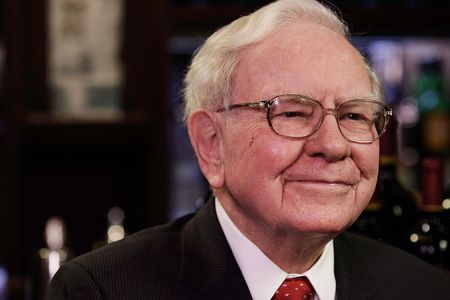 5 of Warren Buffett's Best Investments
5 of Warren Buffett's Best InvestmentsWarren Buffett has had plenty of wins throughout his decades of investing. Here, we highlight five of Buffett's best investments.
By Kyle Woodley Published
-
 Apple's 100,000% Return Is a Result of Innovation, Brand Loyalty and Buybacks
Apple's 100,000% Return Is a Result of Innovation, Brand Loyalty and BuybacksApple spends billions buying back its own shares, but this is just one catalyst behind the incredible growth in its share price.
By Louis Navellier Published
-
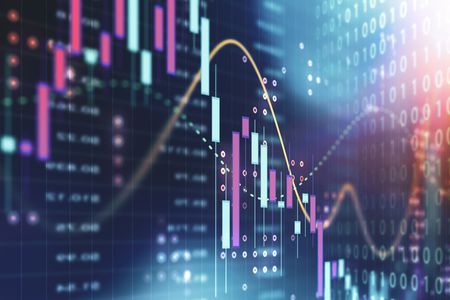 Stock Market Today: Stocks Struggle After Trump's EU Tariff Threats
Stock Market Today: Stocks Struggle After Trump's EU Tariff ThreatsStocks pared early gains after Trump threatened the European Union with 25% tariffs.
By Karee Venema Published
-
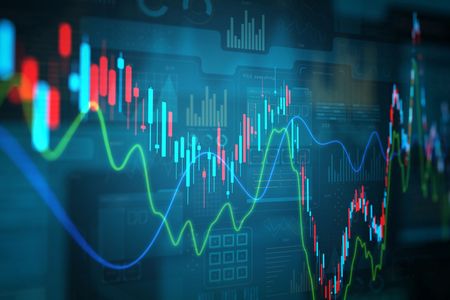 Stock Market Today: Dow Gains After Nike Gets Upgraded
Stock Market Today: Dow Gains After Nike Gets UpgradedJefferies thinks Nike's new CEO will spark a turnaround in the beaten-down blue chip.
By Karee Venema Published
-
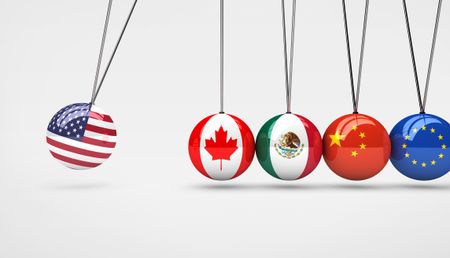 Best Investments to Sidestep Trump's Trade War
Best Investments to Sidestep Trump's Trade WarThese ETFs are well-designed to weather rising U.S. protectionism and retaliatory tariffs.
By Jeff Reeves Last updated
-
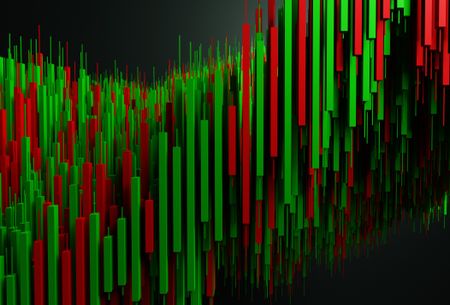 Stock Market Today: It's Mostly Onward and Upward for Equities
Stock Market Today: It's Mostly Onward and Upward for EquitiesThe major U.S. equity indexes were mixed Friday but closed an eventful week for earnings and data modestly higher.
By David Dittman Published
-
 Stock Market Today: Stocks Pop on Time-Delayed Tariffs
Stock Market Today: Stocks Pop on Time-Delayed TariffsAll three major U.S. equity indexes rallied to intraday highs following President Trump's latest trade moves.
By David Dittman Published